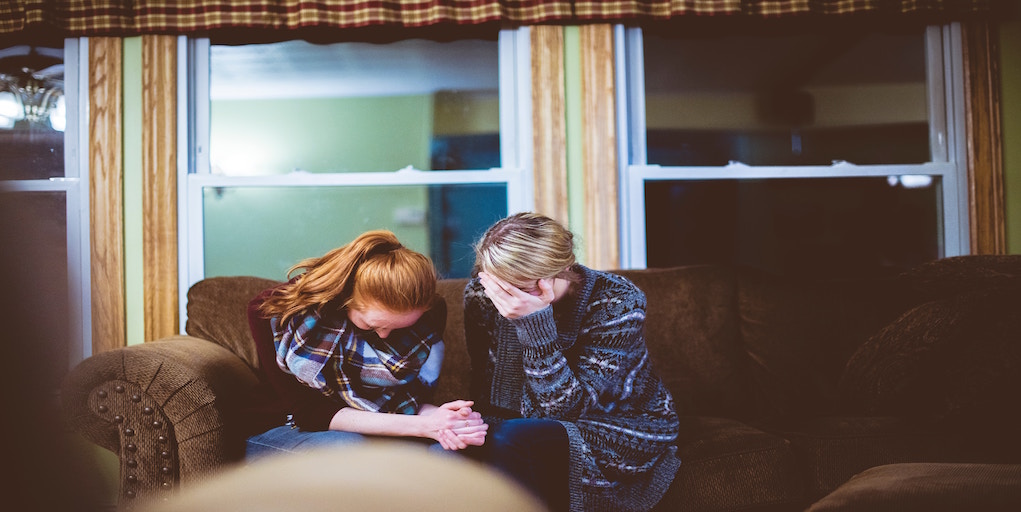Let the journey of self-discovery enrich your life...
Among trauma survivors, there’s a phenomenon that often occurs: they feel compelled to stay silent about the abuse they endured. This silence, while seemingly enigmatic, is multifaceted, and it contains deep emotions, fears, and psychological complexities. In this article, we’ll delve into some underlying reasons why trauma survivors commonly choose to hide their experiences of abuse—even from trusted loved ones.
It’s crucial to understand that silence doesn’t indicate an absence of pain. Neither does it represent an unwillingness to share one’s struggles. Rather, the silence often speaks volumes about the complex realities that trauma survivors navigate. For some, silence isn’t merely an absence of spoken words, but is instead a conscious choice kept in place by a meaningful and ongoing internal dialogue. By shedding light on the reasons for this silence, we can foster greater empathy, awareness, and validation for the experiences of those who have lived through profound trauma. Through this understanding, we become better equipped to create an environment that supports healing and growth.
Let’s look at five reasons why survivors of traumatic experiences might choose to remain silent about their abuse. For many, this decision is far from simple; in fact, for some, it may not feel like a choice at all.
Speaking makes the unthinkable more real
Imagine memories of abuse as fragments submerged in the depths of a vast ocean. Speaking of the abuse becomes the act of dredging these fragments to the surface, an action that transforms the unimaginable into tangible emotions. Many survivors grapple with the overwhelming reality that articulating their experiences makes the memories and re-lived experiences more emotionally palpable, forcing the individuals to confront the rawness of their wounds head-on.
Many survivors grapple with the overwhelming reality that articulating their experiences makes the memories and re-lived experiences more emotionally palpable, forcing the individuals to confront the rawness of their wounds head-on.
Choosing not to share these distressing experiences with others allows past traumas to linger as internal, remote entities. This internal distance imbues them with a dream-like, surreal quality, which in turn renders them more manageable.
Trauma researchers propose that traumatic events are often encoded in sensory and emotional fragments rather than cohesive narratives (Levine & Frederick, 2015; Van der Hart, et al., 2006; Van der Kolk, 2014).
For survivors, breaking the silence could mean allowing these fragments to flood into consciousness, making the previously distant trauma vivid and palpable. The emotional weight of acknowledging their experiences can be overwhelming, and many survivors may avoid speaking of their abuse to prevent being inundated by these distressing emotions.
Speaking brings the fear of retribution
Consider the secret of past abuse as a locked door behind which lurks the threat of retribution. Breaking this silence can feel like unlocking that door and exposing oneself to potential harm. Trauma survivors may fear retaliation from those who inflicted the abuse or those who enabled it, creating a fortress of silence to shield themselves from the threat of further harm.
This fear might be rooted in the traumatic past, when revealing the abuse could have led to significant emotional and physical retribution. Some survivors may continue to carry the weight of this history, a part of them still holding the fear of annihilation if the silence is broken. The dark clouds of past threats cast a long shadow over the survivor’s present, perpetuating the belief that sheltering traumatic experiences in silence is the only way to ensure safety.
For those who endured childhood sexual, physical or emotional abuse within relationships where power dynamics were skewed, the fear of retribution becomes even more profound.
Emotional abandonment, ostracism, and the withdrawal of love can serve as potent forms of psychological violence, magnifying the survivor’s dread of speaking out. The prospect of losing not just the illusion of familial unity, but also the emotional connections that are relied upon, can create a paralyzing fear. This fear isn’t confined solely to physical harm; it also includes emotional and psychological suffering, which is why the choice to remain silent becomes a survival strategy.
The trauma of not being believed
The fear of not being believed, of having their experiences dismissed as fiction, can be paralyzing and re-traumatizing to survivors of childhood abuse. Survivors might keep their stories hidden, fearing that the skepticism or judgment of others will bring about fresh pain.
Trauma survivors who anticipate disbelief or blame from their social circle may be less likely to share their experiences. The fear of judgment can act as a powerful deterrent, causing survivors to internalize the belief that their stories won’t be validated. Consequently, they may choose silence as a protective mechanism against the pain of invalidation.
When family members deny or dismiss the survivor’s accounts, it can evoke feelings of isolation, betrayal, and a deep sense of abandonment.
When family members deny or dismiss the survivor’s accounts, it can evoke feelings of isolation, betrayal, and a deep sense of abandonment. The individuals who are supposed to provide support and understanding become a source of further harm, intensifying the emotional wounds left by the initial trauma. The invalidation of their experiences by those closest to them can rekindle feelings of powerlessness and reawaken the very pain survivors sought to distance themselves from, exacerbating their struggle to find solace and healing.
Silence as a means of protecting the abuser
In the landscape of family dynamics, the survivor’s silence in the face of abuse perpetrated by a family member (or a trusted other) can often be rooted in a complex interplay of emotions and conflicting loyalties. To speak out about the abuse is to potentially disrupt the fragile equilibrium of familial relationships, revealing a gut-wrenching truth that challenges the perception of the family as a safe haven.
Acknowledging the abuse might necessitate confronting the unsettling reality that the abuser, who should be a source of support and protection, is the cause of serious harm. This paradoxical and emotionally charged reality can lead the survivor to grapple with a disorienting sense of ambivalence.
Children too often blame themselves for the abuse they endure. This complex coping mechanism serves a dual purpose: it preserves the illusion of a safe relationship with the abuser; and secondly, it imparts an illusion of control to the child. By internalizing responsibility, children believe that if they can somehow “fix” themselves or alter their behavior, the abuse will end. This desperate grasp at control within a situation marked by powerlessness underscores the depth of the need for safety and stability, even if it’s achieved through self-blame.
To preserve the relationship, the abused may rely on silence, and sacrifice themselves in the process. This is compounded when the abused is dependent on the abuser for basic needs. Speaking out about the abuse risks unraveling the relationship, forcing survivors to confront the agonizing paradox of love and hate, the devastating violations and shattered trust by a loved one, and the lived experience of betrayal that now defines the relationship.
Concealing abuse to preserve the self
Imagine the survivor’s sense of self as a delicate mirror, reflecting their identity and self-worth back to them. It can feel like acknowledging the past abuse will shatter this mirror, leaving the survivor with a fragmented sense of self and overwhelming emotions. Concealing the abuse can be an attempt to keep the mirror intact, preserving a coherent self-image and shielding themselves from the unbearable weight of intense negative feelings and self-judgment.
To speak of abuse may disrupt the established narrative that survivors have constructed around themselves, challenging their self-perception and confronting them with feelings of shame and brokenness. This occurs because so many survivors of childhood abuse internalize a pervasive belief that they were complicit in their own victimization (“I should have done more to stop it”; “Why didn’t I tell someone?”; “Why did I keep going back to the abuser?”).
This distressing self-perception arises from the manipulative tactics often employed by abusers, who through the very act of the abuse, insidiously exploit the survivor’s vulnerability. As a result, survivors may carry a heavy burden of guilt and shame, questioning whether they provoked or somehow deserved the abuse inflicted upon them. This self-blame becomes an emotional shackle, anchoring them to silence as a means of self-preservation. The abuse and its impact may also be minimized (“It wasn’t a big deal”; “Lots of people had to deal with much worse”) in these self-preservation efforts.
The mixture of internalized guilt/shame and fear of judgment creates a suffocating reality where revealing the truth is synonymous with exposing one’s perceived deficiencies.
The mixture of internalized guilt/shame and fear of judgment creates a suffocating reality where revealing the truth is synonymous with exposing one’s perceived deficiencies. As a result, concealment of the abuse can be seen as the only viable safeguard in preventing further harm and re-traumatization.
~~~
The silence that trauma survivors often guard is a testament to the layered psychology of their painful journeys, a frame of mind that includes emotional clarity, fears of retribution, wariness of judgment, complex emotions, and the preservation of self. By understanding these dynamics, we can begin to offer survivors a safe space in which to share their stories.
For healing to occur, it is vital to acknowledge the myriad factors that contribute to this silence. This acknowledgment lays the groundwork for an environment of empathy and support. In this way, we honor the courage of survivors who navigate the labyrinth of their trauma, recognizing that their silence is not a sign of weakness, but a testament to their resilience and their courage in coping with the indescribable. By listening, validating, and offering a sanctuary for their voices, we can empower survivors to speak their stories when they are ready to begin (or continue) the process of healing and reclamation.
~~~
Rich Nicastro, PhD., is a licensed clinical psychologist based in Austin, Texas. He has over twenty-five years of experience working with childhood trauma and betrayal trauma. Dr. Nicastro is credentialed through PSYPACT, which allows him to work with individuals and couples in many states in the U.S. To check whether your state is among those approved jurisdictions, click PSYPACT.
Article references
Levine, P. A., & Frederick, A. (2015). Trauma and Memory: Brain and Body in a Search for the Living Past: A Practical Guide for Understanding and Working with Traumatic Memory. North Atlantic Books.
Van der Hart, O., Nijenhuis, E. R. S., & Steele, K. (2006). The Haunted Self: Structural Dissociation and the Treatment of Chronic Traumatization. W. W. Norton & Company.
Van der Kolk, B. A. (2014). The Body Keeps the Score: Brain, Mind, and Body in the Healing of Trauma. Penguin Books.









